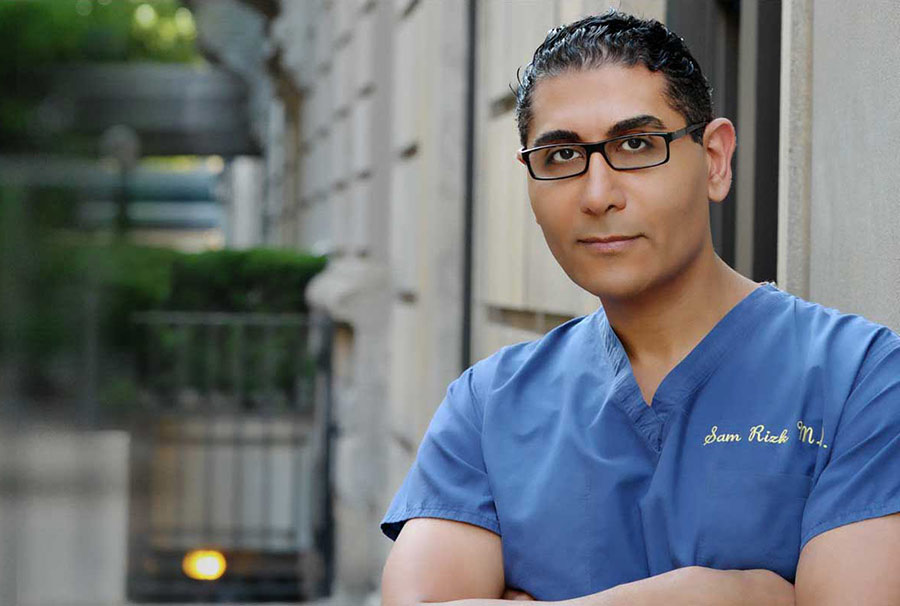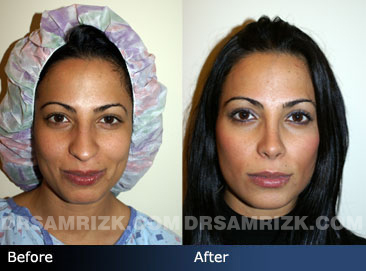Sedation, or anesthesia, refers to medications and procedures used to minimize pain. When properly administered, sedation also restricts the patient’s movement during surgery so that the surgeon can operate unhindered.
There are three basic types of sedation: local; intravenous (IV), aka MAC anesthesia, IV sedation or twilight sedation; and general anesthesia. They are often combined.
There are pros and cons to each type of sedation in terms of safety, cost and side effects. The type of sedation I use with my patients during rhinoplasty depends on a variety of factors, including the patient’s preference, my assessment of his or her medical history and current health, and the invasiveness of the procedure. I usually recommend general anesthesia due to the fact that rhinoplasty is a complex, invasive procedure.
Types of Sedation Doctors Offer to Nose Job Patients
For rhinoplasty, I use either general anesthesia or IV sedation in combination with local anesthesia, (a mixture of lidocaine and epinephrine), the last of which numbs the nose and also reduces bleeding. I do not solely offer local anesthesia for nose jobs. I will evaluate your medical history and conduct preoperative exams to determine which type of sedation I feel is most appropriate for you. However, your preferences will also be considered. Many surgeons, myself included, believe that general anesthesia is the best option in most cases.
Local Anesthesia
Local anesthesia is a type of anesthesia used to numb the surface of a body part. It is usually injected intravenously and its effects typically last about a half hour. When injected, local anesthesia numbs a small area of skin and deeper tissue. In some cases it is first administered topically to numb the skin and then an additional dose is injected. This type of anesthesia blocks pain and relaxes the muscles. It is often combined with an oral sedative, in which case the patient is awake but doesn’t feel any pain.
Intravenous Sedation
Intravenous sedation is the preferred method of sedation for many procedures. However, administering it and determining the right dose requires considerable skill. The goal of IV sedation is to render the patient unconscious and motionless, without affecting breathing. This type of sedation does not require a breathing tube, but an oxygen mask may be used for extra oxygen. It costs less than general anesthesia. However, it does have several potential downsides (see below).
General Anesthesia
General anesthesia is a delicate art that can only be practiced by a board certified anesthesiologist, as respiratory and/or cardiovascular support may be needed. This type of sedation may be inhaled or injected intravenously.
Though some people worry about the potential risks of general anesthesia, in reality it is quite safe when administered properly. It is also important to note that less anesthesia is needed with facial plastic surgeries than with many other types of surgeries. If we use general anesthesia for your rhinoplasty, you will not remember the procedure. You are also more likely to remain motionless with this type of anesthesia, and the use of an airway means that there is better protection. General anesthesia is the best option for longer and more-invasive procedures. For facial plastic procedures the dose of anesthetic is comparable to that used with IV sedation, so the aftereffects typically are not significant. The amount of anesthesia can be altered as needed to lessen bruising, bleeding and swelling, in turn leading to better results.
Are There Any Associated Risks or Side Effects?
Though rare, all types of anesthesia do have risks. Prior to your nose job I will conduct several tests to determine if you are at heightened risk for any side effects associated with any of the types of anesthesia.
Side effects of local anesthesia are quite rare unless the patient is allergic to anesthesia. In very rare cases, local anesthetic can get into the bloodstream and affect breathing, blood pressure and heartbeat.
Side effects of IV sedation include nausea, headache and sleepiness, which may last for several hours. IV sedation can work well for certain rhinoplasty patients, providing that the correct dose is administered. However, if the dose is even slightly off the patient may move around, become disoriented and disrupt the procedure. In extreme cases, patients have been known to stop breathing, and because there is no breathing tube the airway is unprotected. The lack of a breathing tube also poses the risk that the patient might inhale blood into the lungs, which can cause complications. Again, all of this is very rare. IV sedation is not appropriate for longer procedures because muscle soreness and a full bladder can make the patient restless.
Like local and IV sedation, general anesthesia does have potential side effects. One of the most common is sluggishness, which may last for a while. Other potential side effects include a sore throat from the breathing tube, dry mouth, shivering/coldness, and impaired judgment and coordination. Another potential side effect is postoperative vomiting, which can be problematic because it may increase blood pressure, bruising, discomfort and swelling, all of which can lead to tissue inflammation that can adversely affect the outcome of the procedure. The risk of vomiting cannot be entirely eliminated. However, narcotic-free anesthesia has almost completely eliminated this risk.
Many patients who have had two rhinoplasty procedures report that general anesthesia is more comfortable, with less side effects.
The type of anesthesia I use during your nose job depends on how invasive the procedure is, and on your preferences, medical history and current health. Some patients refuse general anesthesia, while others insist upon it because they want to be “knocked out” during the procedure.
For invasive procedures such as rhinoplasty, I usually prefer to use general anesthesia. For more information, contact my practice today.















